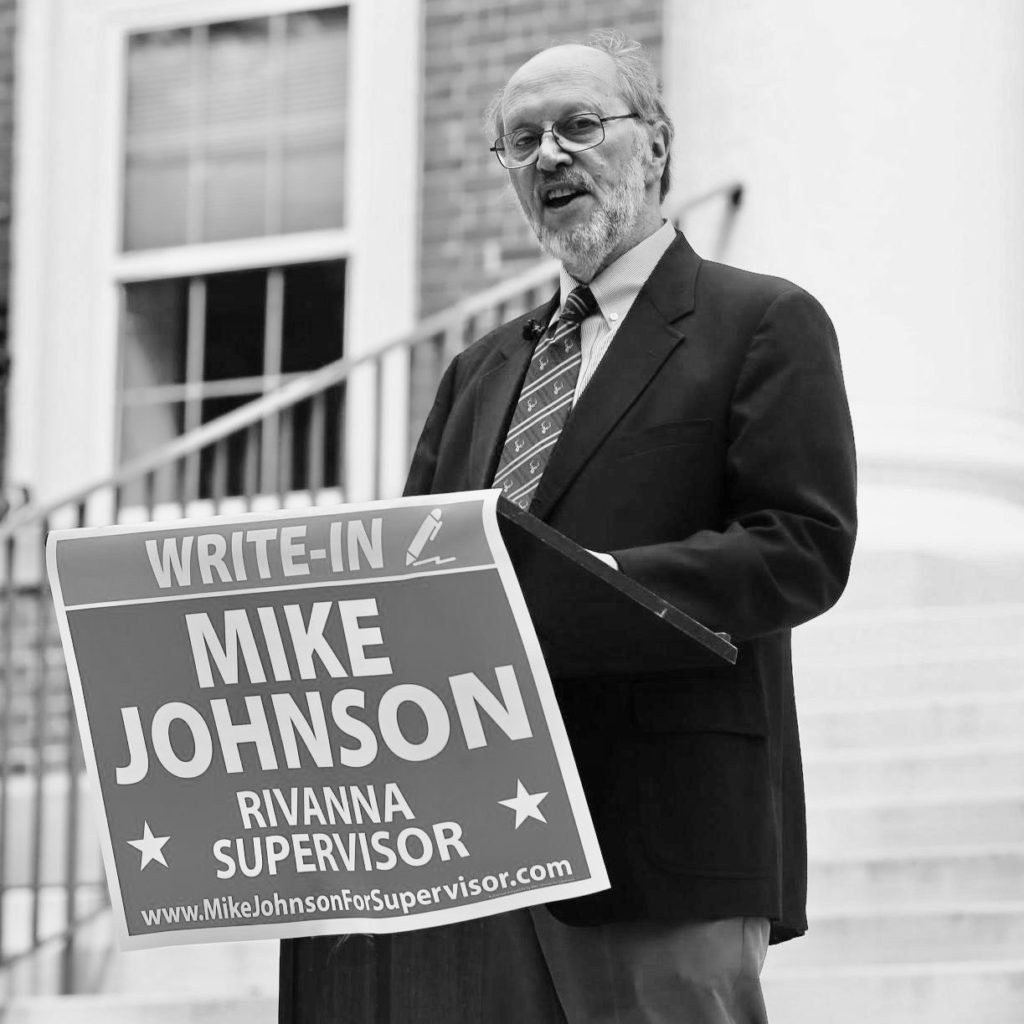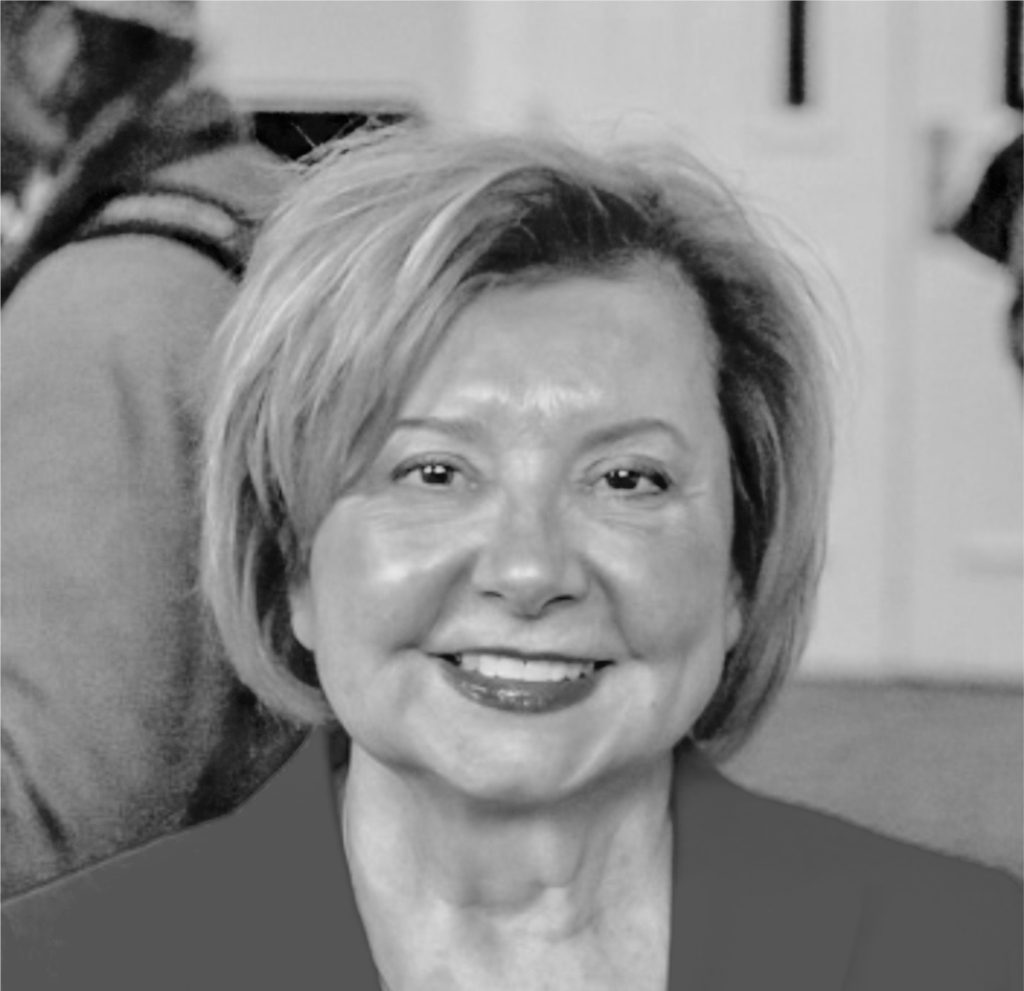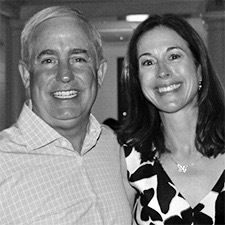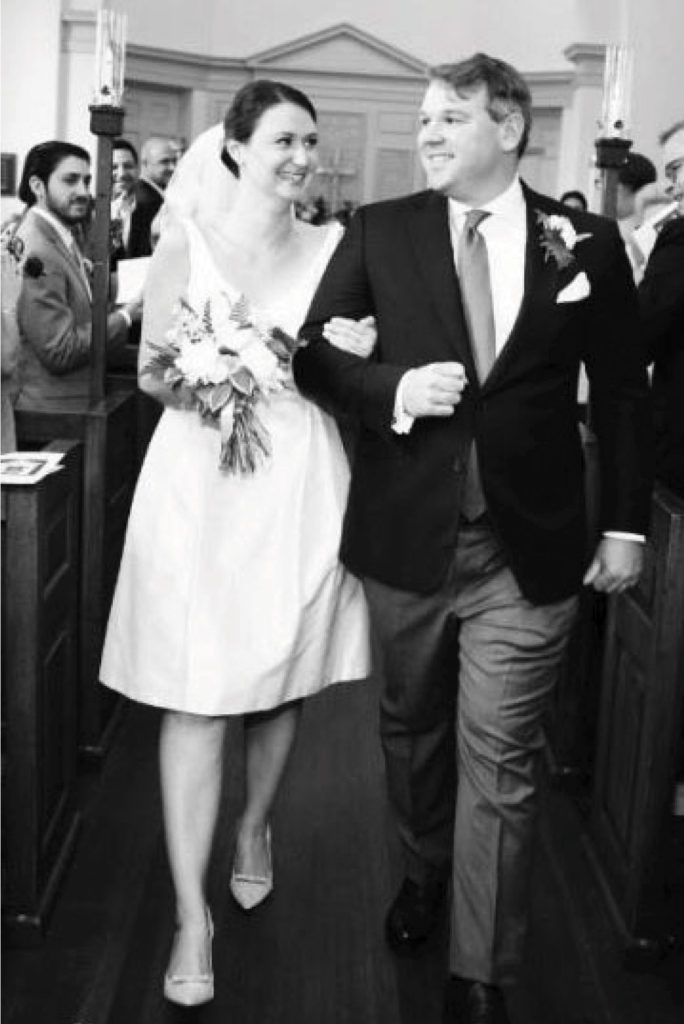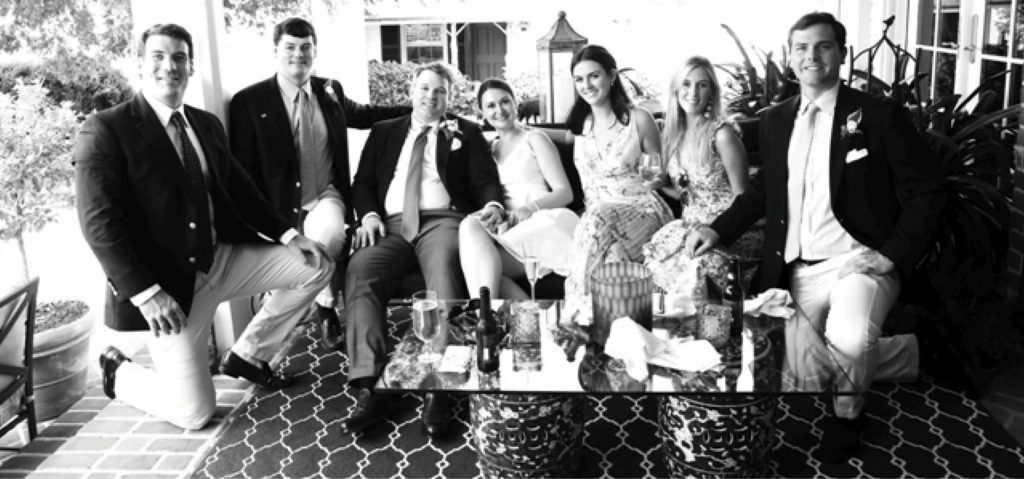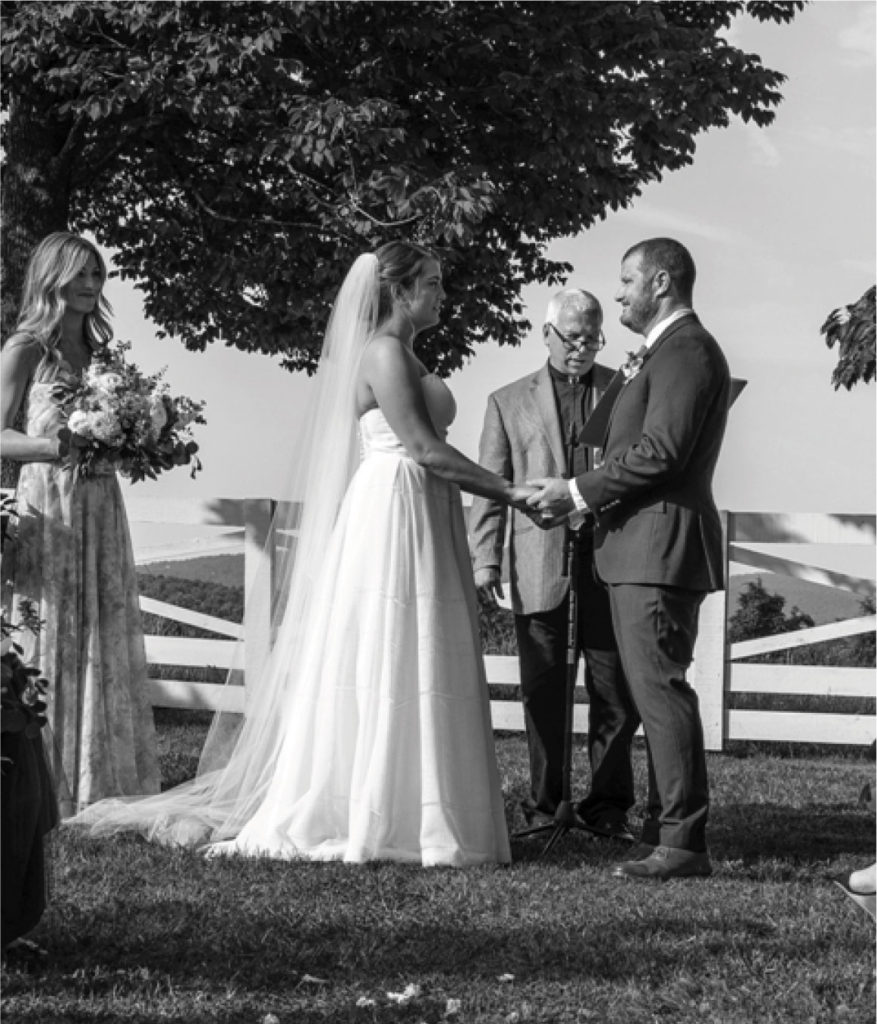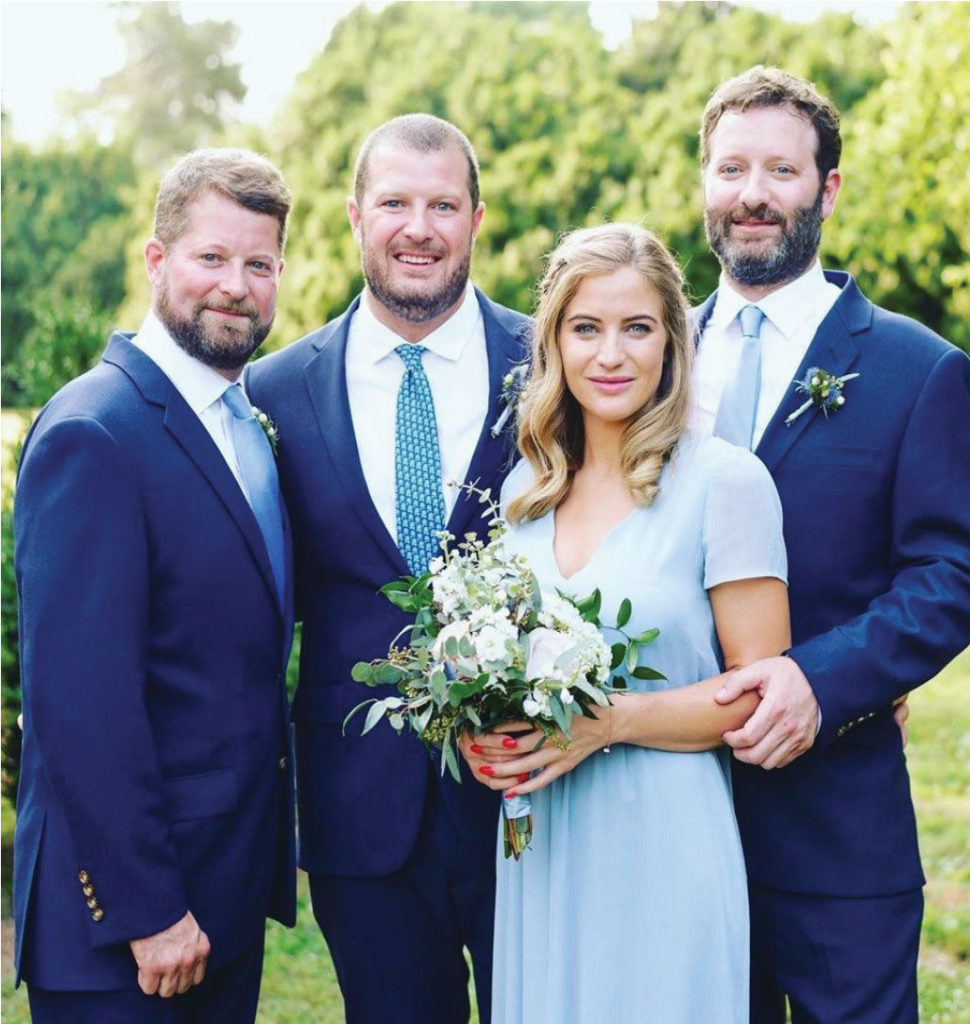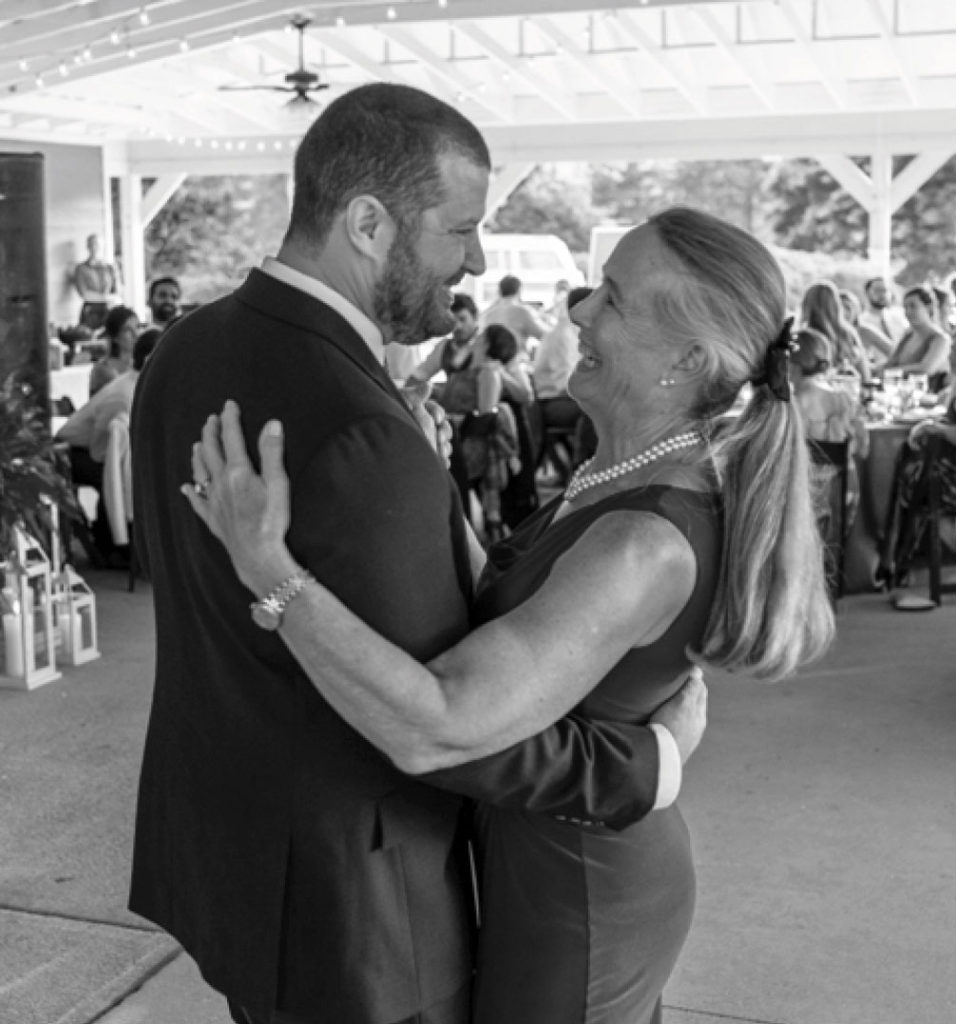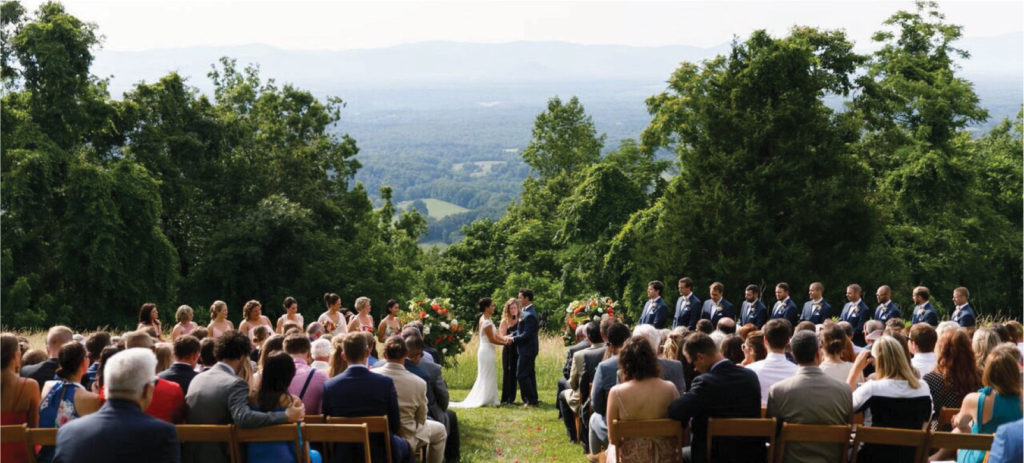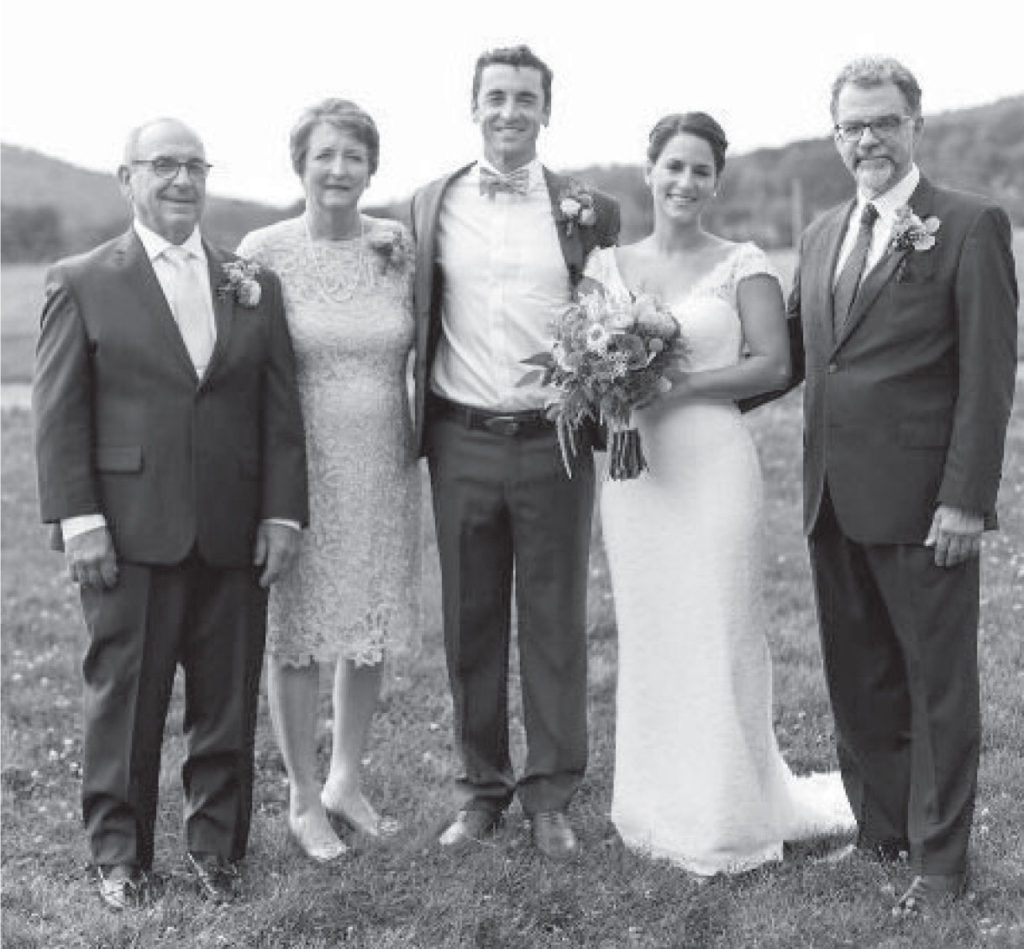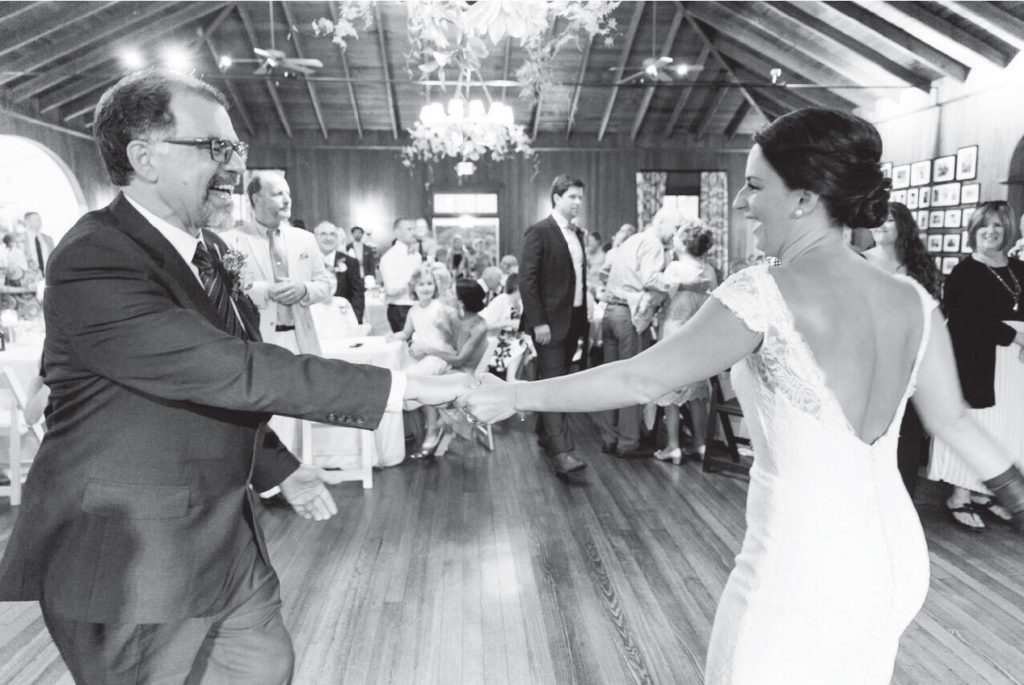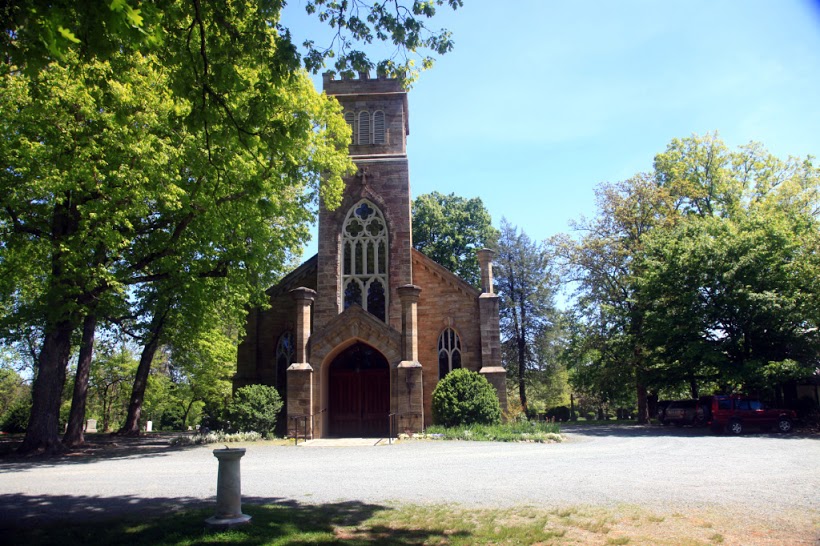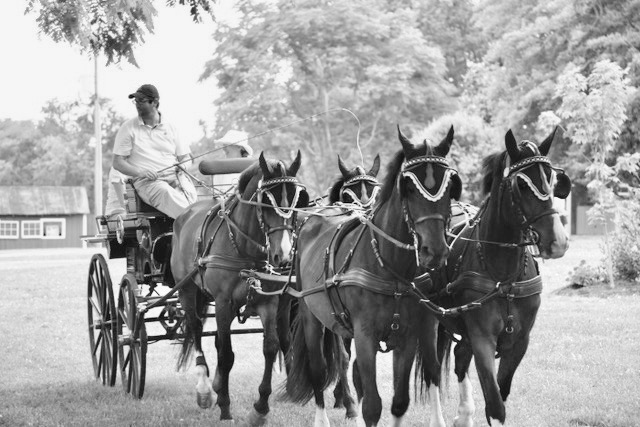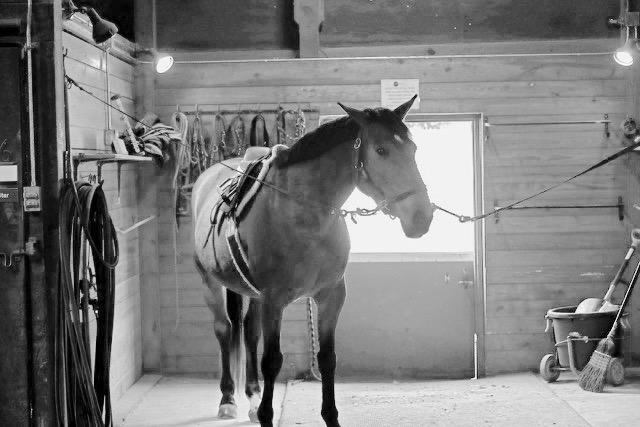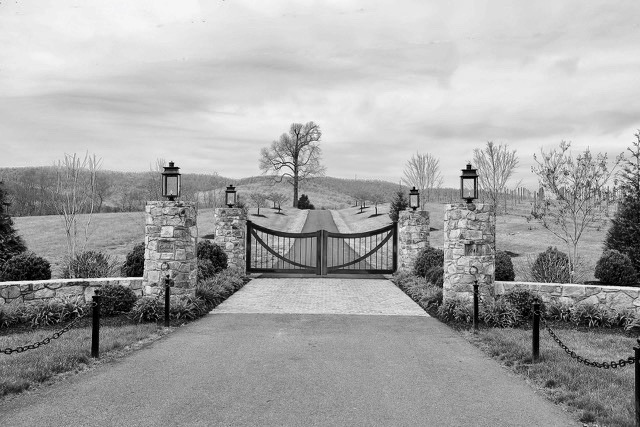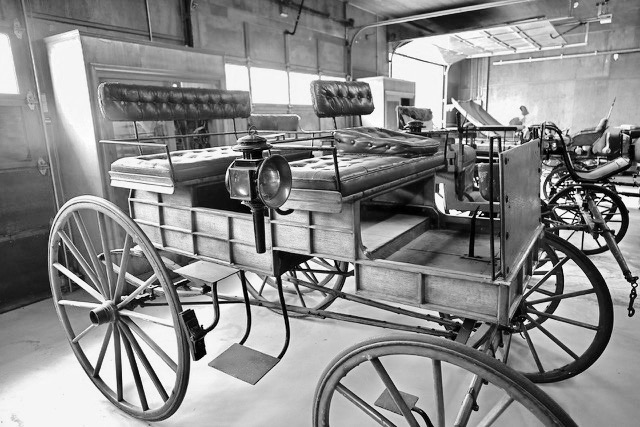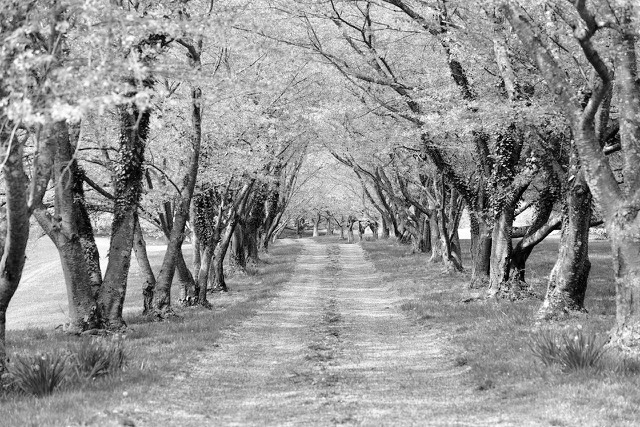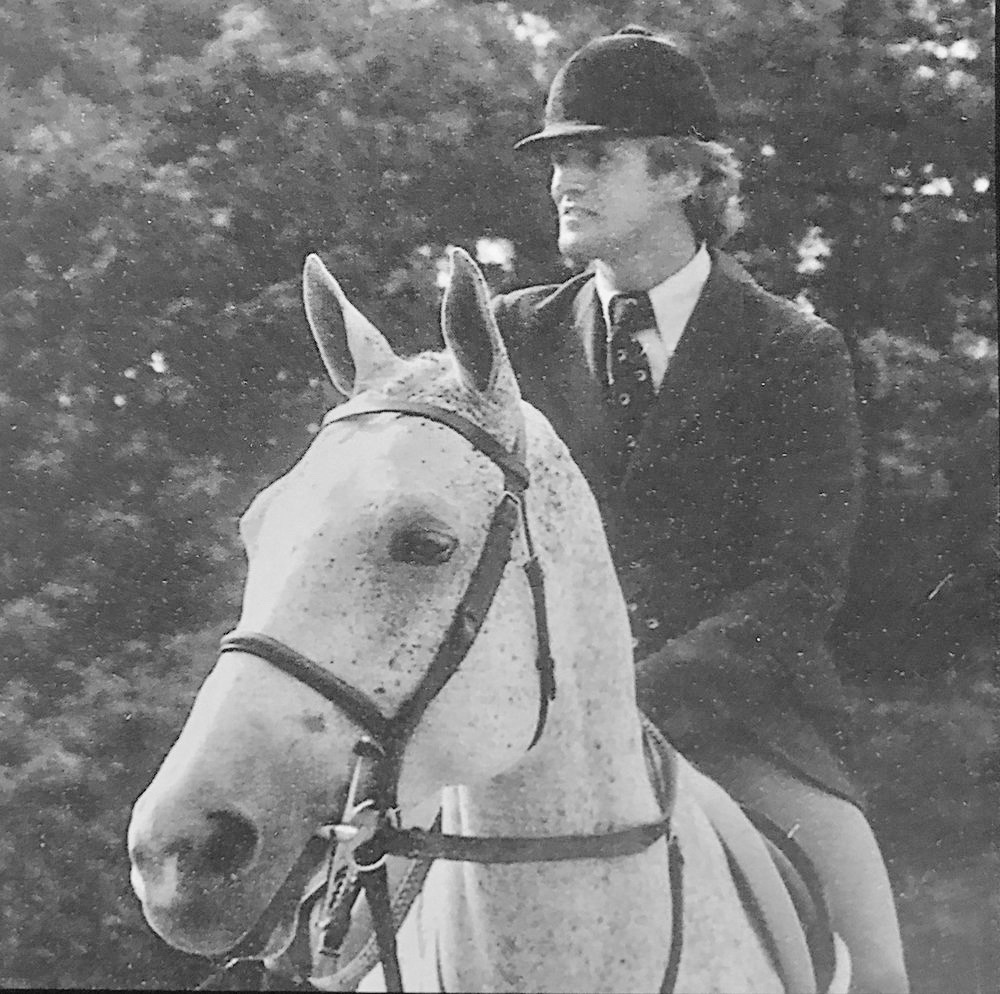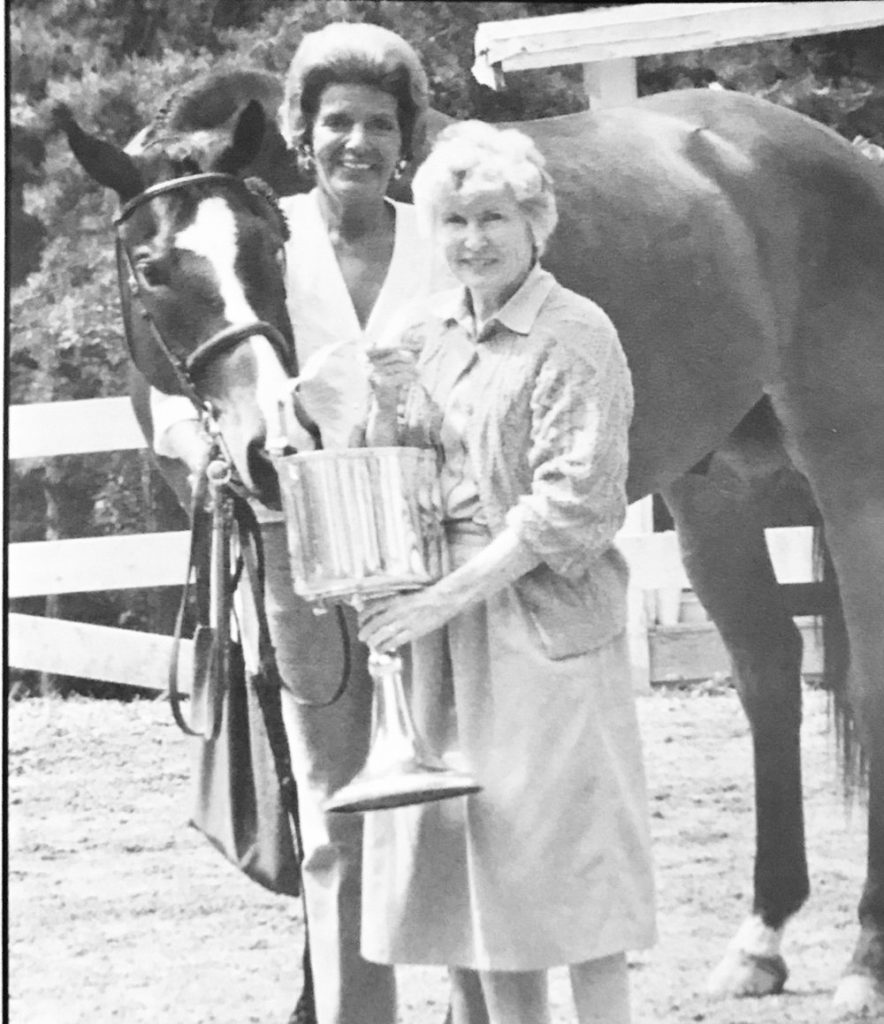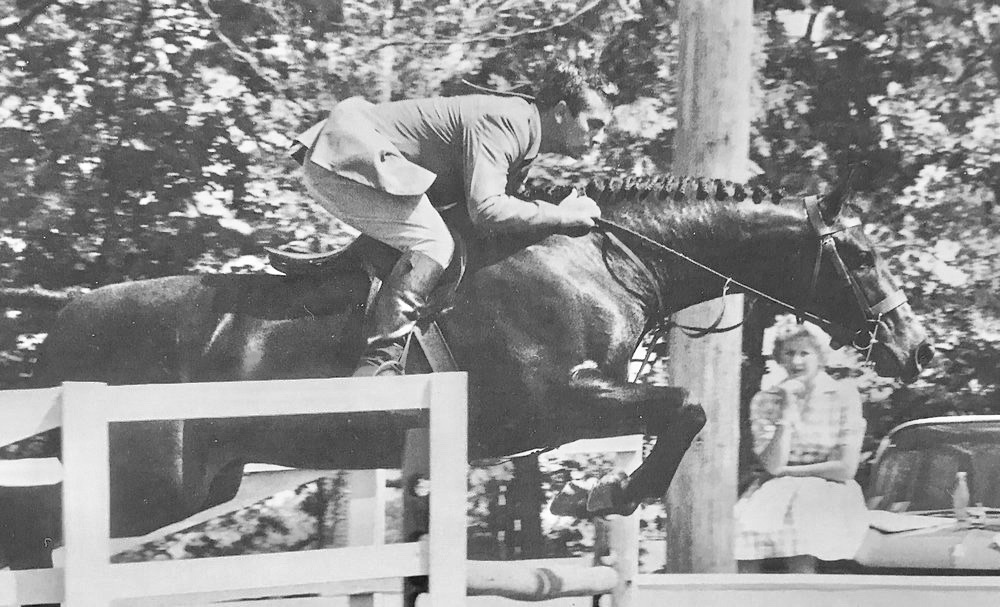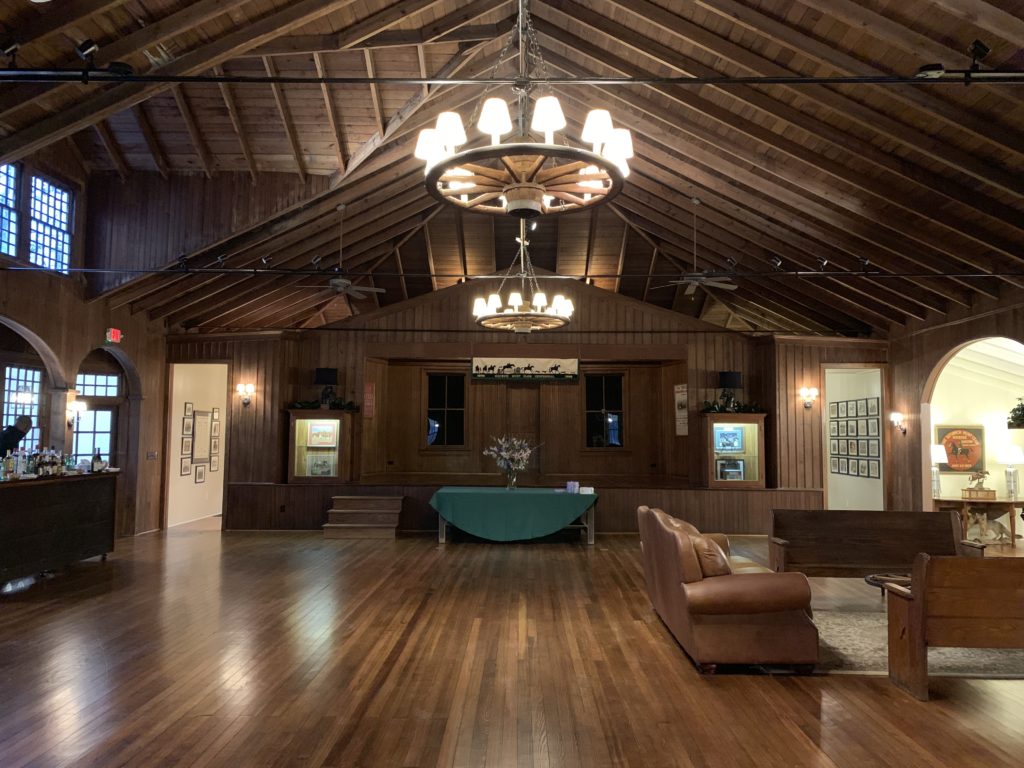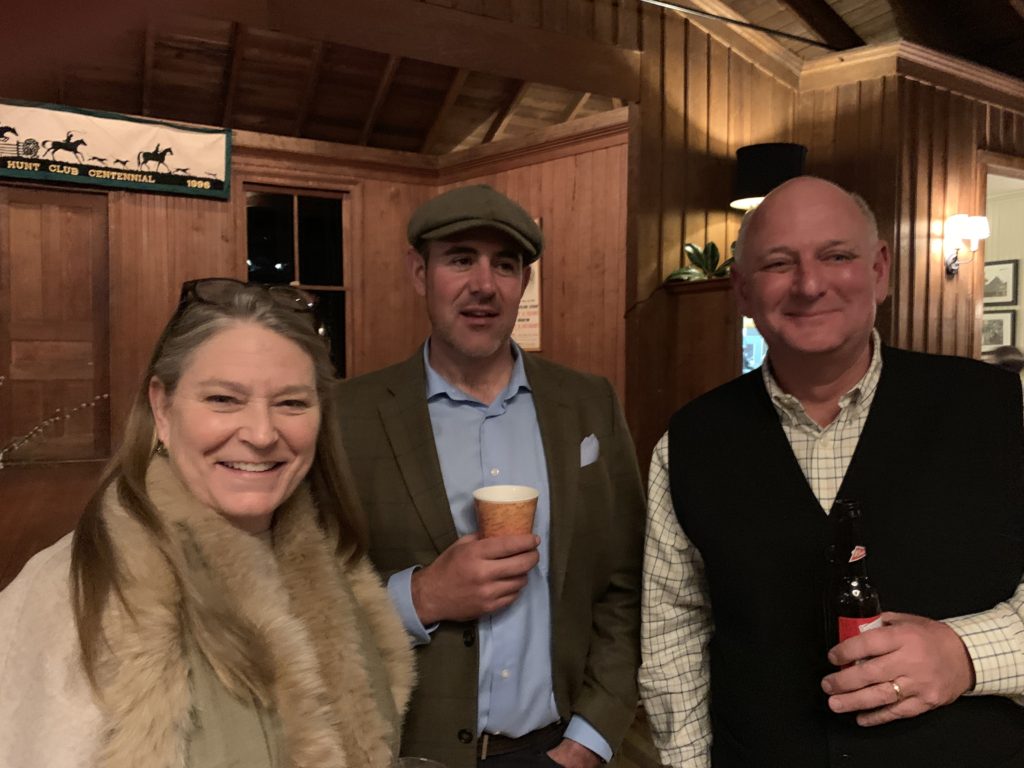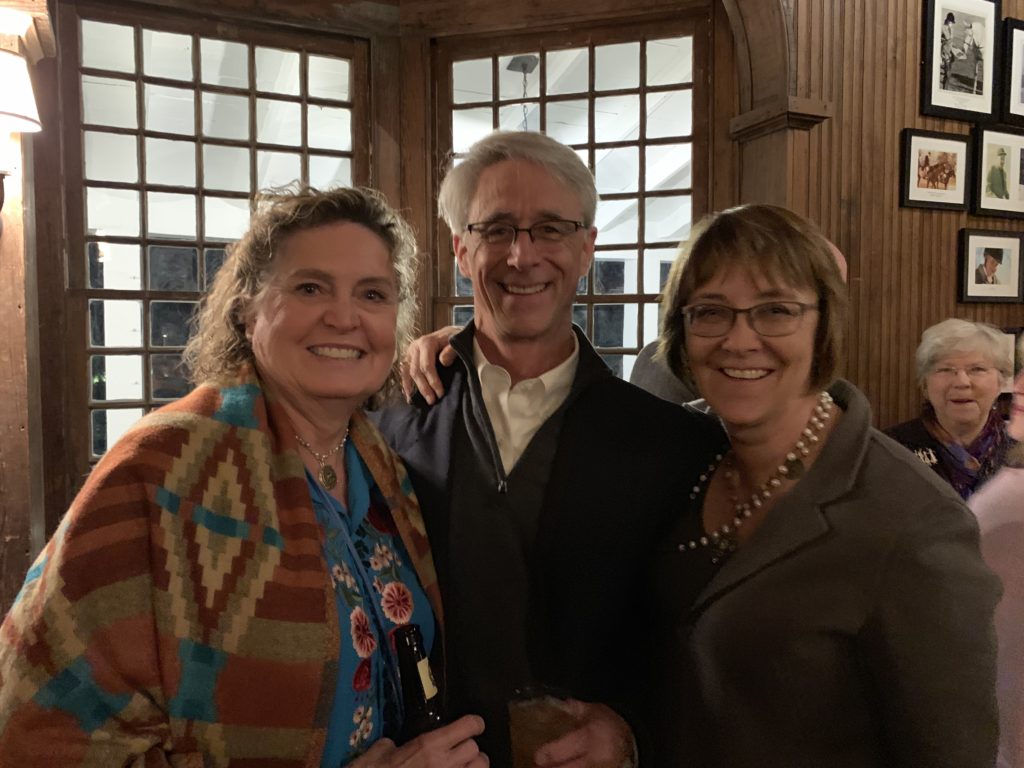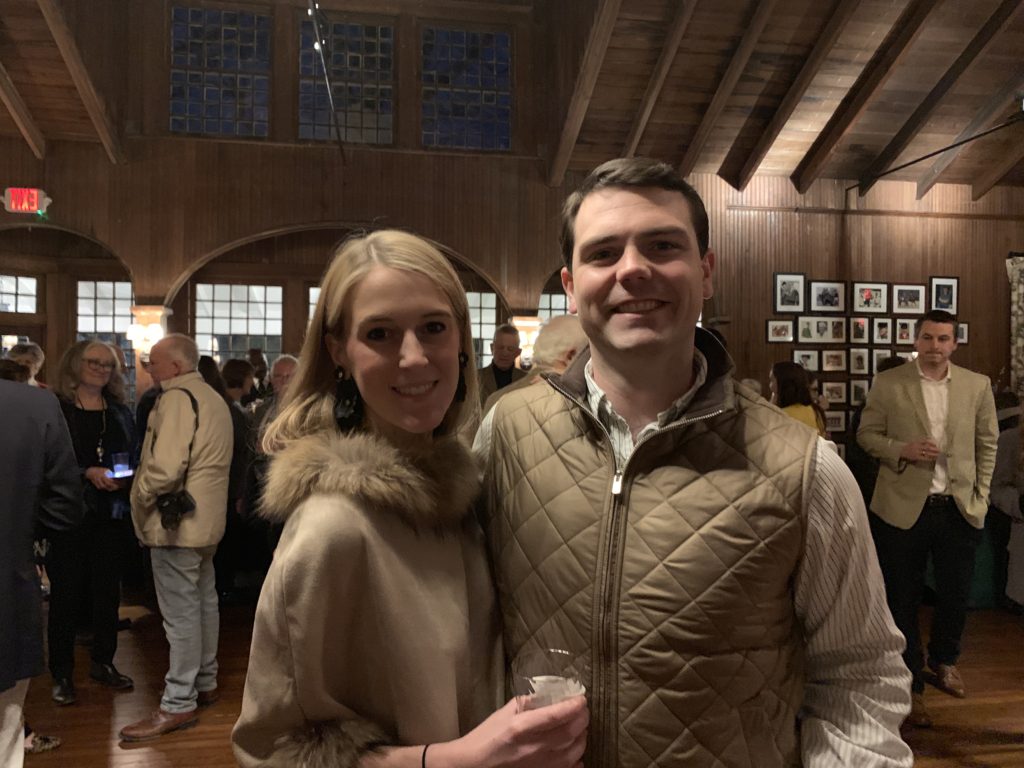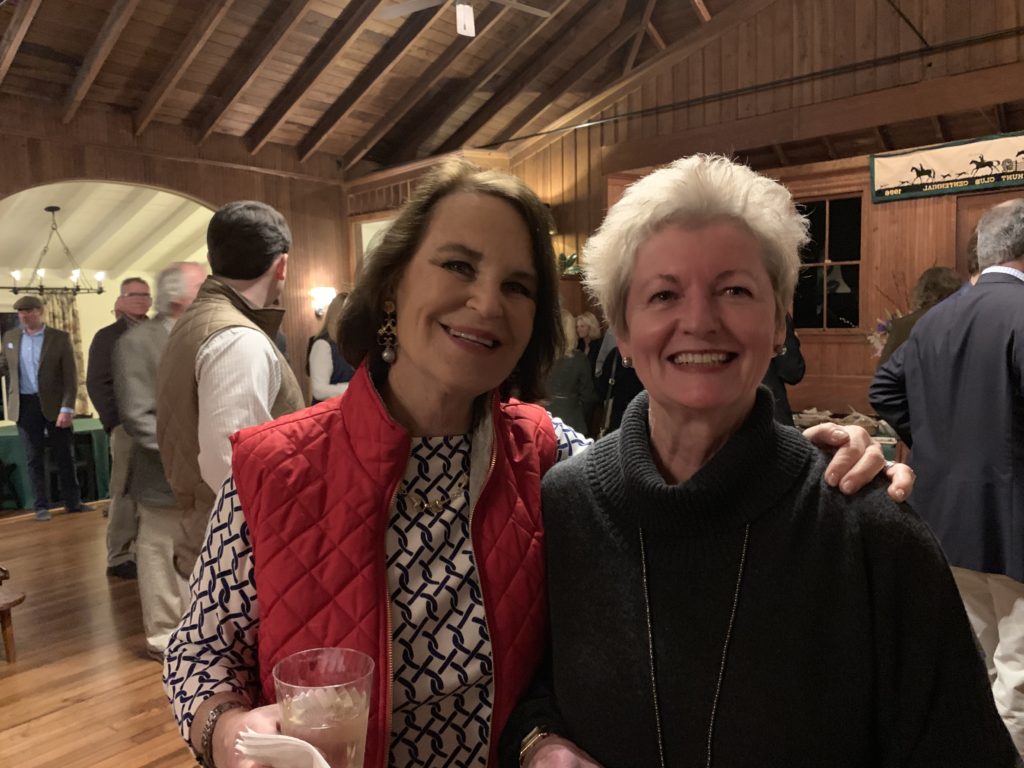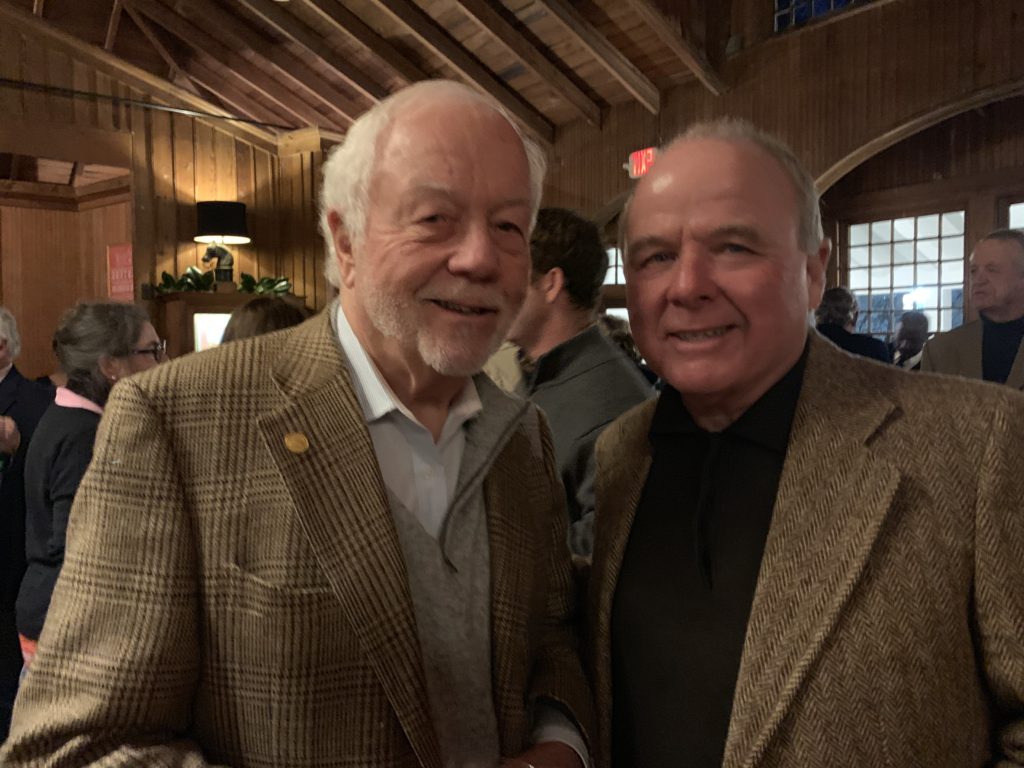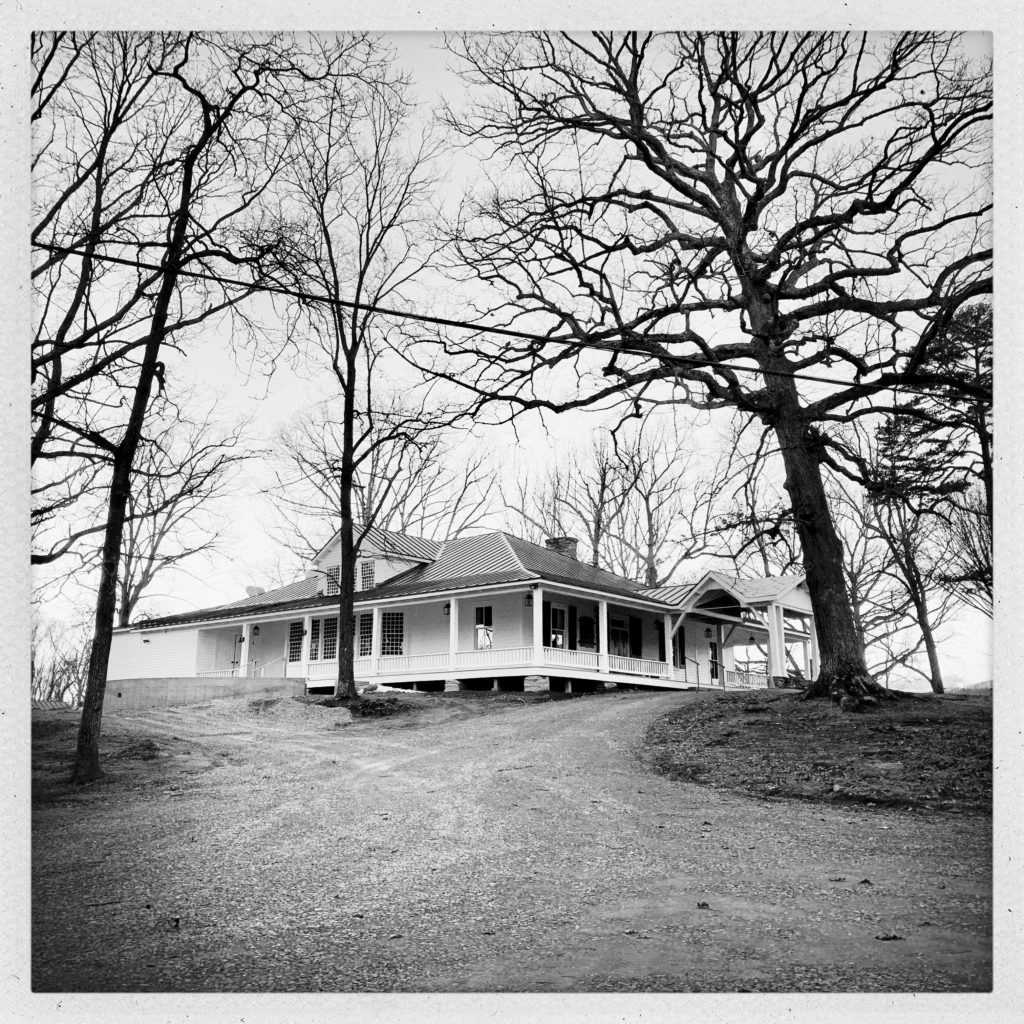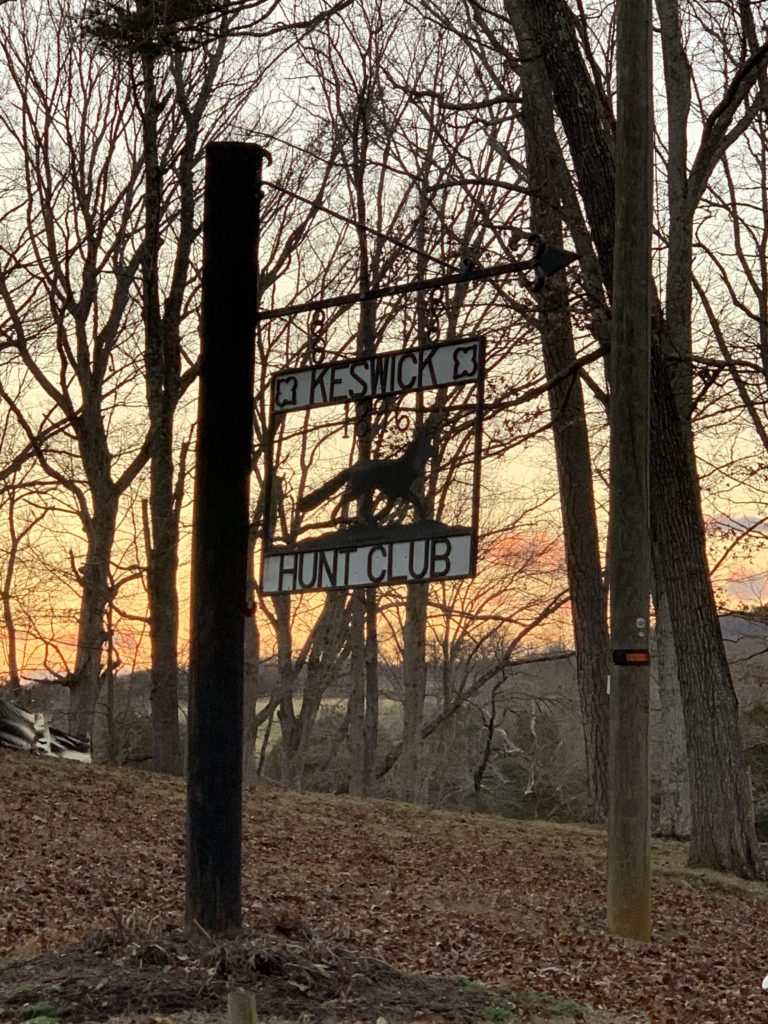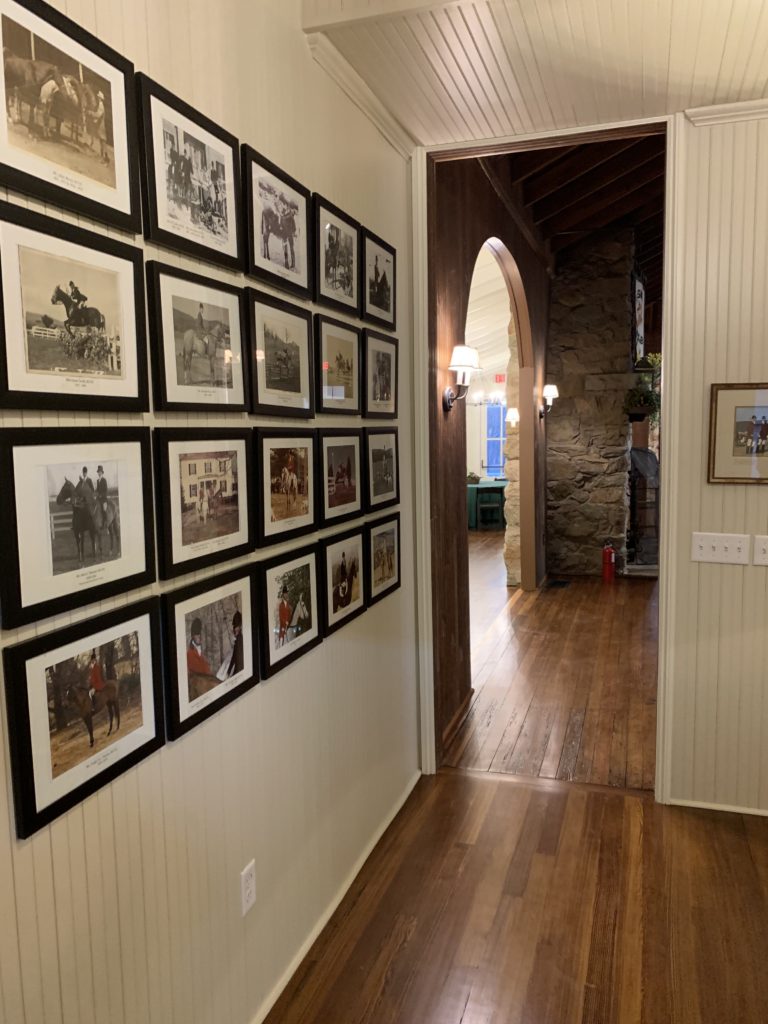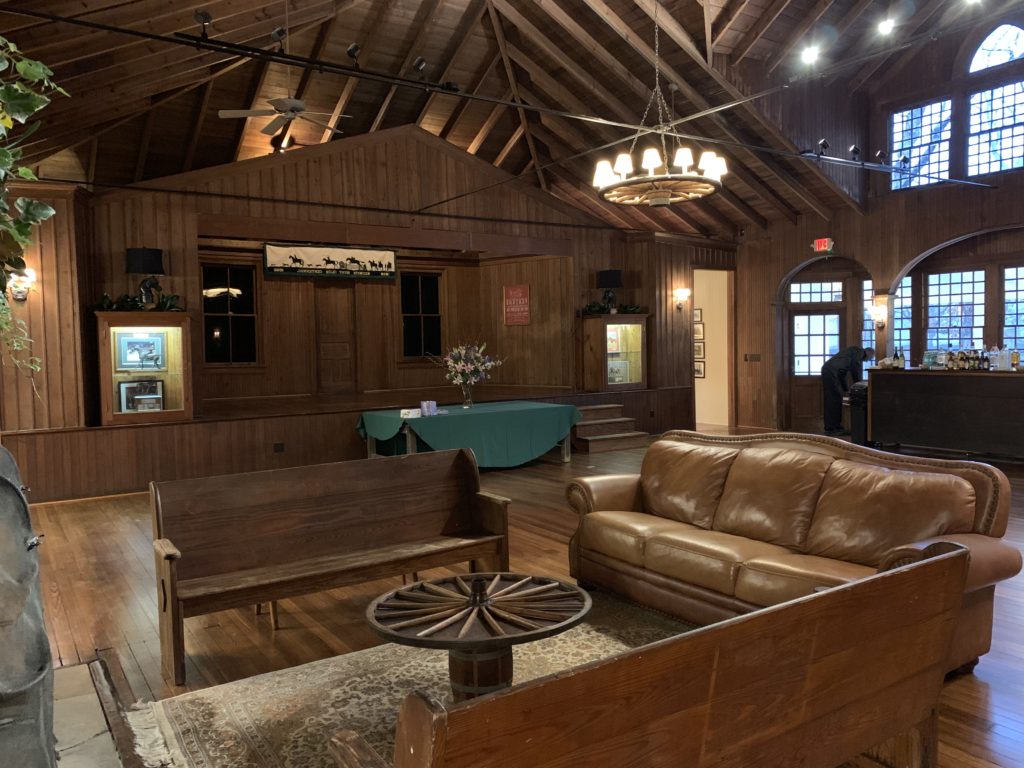Story by Michael G. Latsko, Director of Music & OrganistPhotographs by Bill Remington
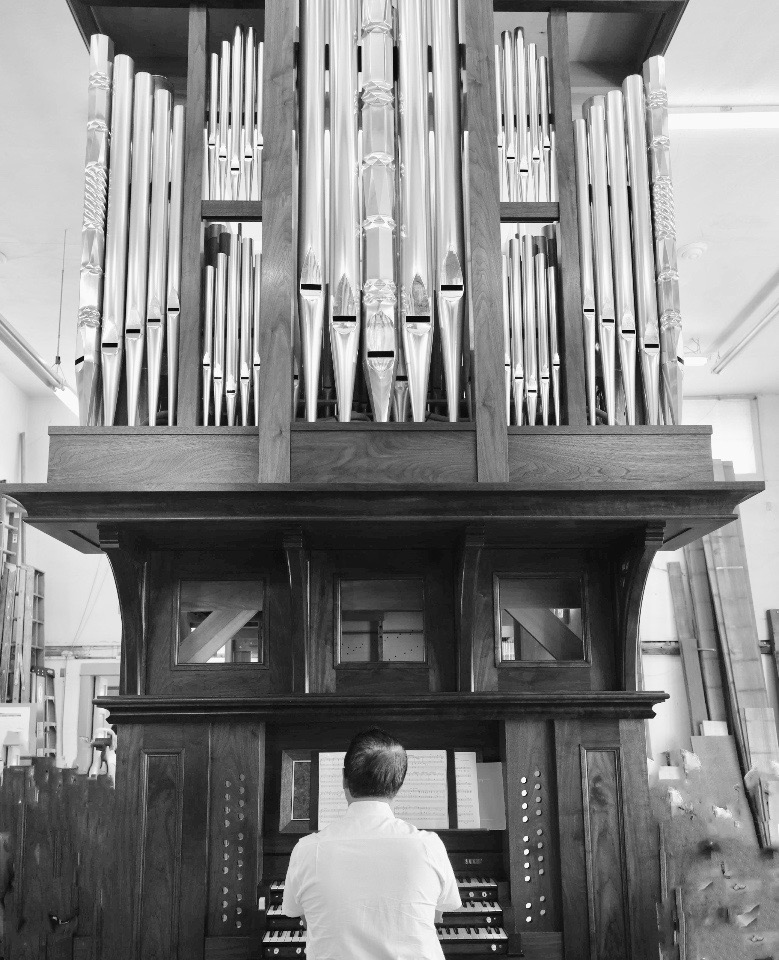
Just in time for its 275th anniversary in 2020, Grace Church will have a refurbished, refreshed (and slightly taller) chancel, a new musician’s gallery framing an interior view of the beautiful tower stained glass window, and a brand new, bespoke pipe organ – the result of the unlikely combination of Mother Nature’s fury and what music director & organist Michael Latsko likes to call “blessed insurance,” a riff on the popular hymn “Blessed Assurance.”
It all started in October 2015 when, after several weeks of constant rain, a visiting organist turned on the church organ. The resulting din sounded like a broken circus calliope – about 50 or 60 notes were sounding at the same time! That was no “joyful noise.” The rains had overwhelmed water abatement systems at the top of Grace Church’s bell tower. Over the course of several days, a literal waterfall fell inside the tower where, several floors below, a major portion of the church’s pipe organ was housed. Leaking rain mixed with plaster dust to ruin tin, brass, wood, leather, metal and electrical components.
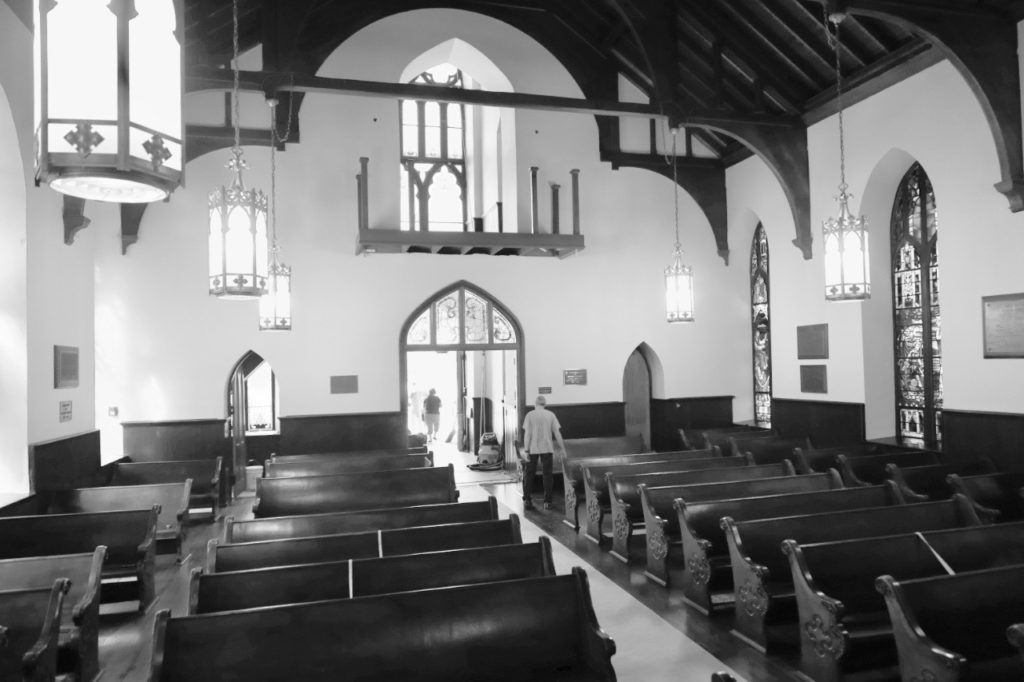
The damaged organ had been purchased and installed in 1959 for $8,500 by Waynesboro organ builder Mark Wetzel. The church raised the funds for the organ from numerous parishioners, including principal donor Donald Gordon Stevens, Jr. His donation was made in memory of his wife Margaret Douglas Randolph who sang in the choir for many years. In 1995 the church commissioned moderate refurbishments at a cost of $85,000 which was raised through the combined efforts of many parishioners and church friends. The wife of Richards D. Maxwell, Jr. (1910-1990) generously offered a matching grant in memory of her husband.
The rains of 2015 were what Michael calls the “second strike” by the Almighty. In spring 2012, the church’s basement boiler misfired (the “first strike”), sending an internal rainstorm of black, oily soot through the ducts and all over the church including the pipes and mechanism of the organ. In July 2012 Grace Church paid organ technicians Grooms & Payne approximately $8,000 to remove the pipes, clean and reinstall the organ.
Water-damaged organs, however, are much more difficult to repair. “Given the organ’s age, repair would have been a stopgap at best, with no guarantee against further problems down the road,” said Michael, an opinion backed up by more than one consultant engaged to assess the damage. Moreover, the configuration of the organ, with the console at the front of the nave and the pipes at the back, could now be rethought. “It certainly was not ideal,” said Michael.
In summer 2016, the church commissioned an “organ task force” to consider options and make a recommendation. In addition to studying and learning as much as they could about pipe organs, the group took field trips, both locally and to locations in Virginia, Washington D.C., and North Carolina, to see, hear, and play a variety of organs, to meet with organ builders, and to learn about and actually see what quality organ building craftsmanship looks and sounds like.
Back at home, some parishioners did not notice that anything was wrong! In fact, there were various notes missing among the “ranks” of pipes that would not, according to Michael, be obvious to the untrained ear. Significantly, only one of the two keyboards (called “manuals” on an organ) had working pipes, so Michael was limited in the literature he could play. Besides not being able to play music employing two manuals (common in organ literature), it was more difficult to avoid overpowering the choir with the sounds that were available (sounds are produced by organ “stops”. Some of the missing “sounds” included angelic and shimmering strings, the robust trumpet and quieter oboe, and other flutes and flues that create the “traditional” organ tone. Finally, all of the unaffected pipes were “out in the open” and not behind shutters (called the “Swell” division) so the organist could not control the volume of the sounds produced or create an effective crescendo.
The pipe organ was dubbed the “King of Instruments” by Mozart, and, until the arrival of the atomic bomb, the organ was the most complicated instrument conceived by the mind of man. In the 18th century, during Mozart’s time, no other machine or instrument was as complex – or as grand – as the pipe organ. The art of organ building has changed very little from its origins in the third century BC, and high-quality pipe organs have lasted for centuries. In fact, the oldest playable pipe organ is in the Basilica of Valère in Sion, Switzerland and was built around 1435. New organs like the one at Grace Church rely on organ building techniques that have been around for centuries. Except for some modern materials (like epoxy and electricity), the pipe construction and key action in particular have stood the test of time. Even with modern materials (such as carbon filament for trackers), pipes are still made from wood and metal, keys with cow bone and wood, and bellows with modern simulations of animal skins. Electronics and technology comprise the most differences – powering bellows to provide the air to the pipes and proving the organist with playing aids and conveniences that enable rapid fire changes to the sounds (“registration”) generated.
During its research, the Grace Church organ task force met with the founders of Taylor & Boody Organbuilders. Founded in 1977 by Virginia native (and graduate of both Woodberry Forest and Washington & Lee) George K. Taylor and Maine-born John H. Boody. In 1979 they moved their company to a renovated school building just outside Staunton, Virginia. Before they began working together George and John studied and apprenticed with some of the most respected organ builders in the world today [Rudolph von Beckerath in Hamburg, Germany, Fritz Noack in Georgetown, MA, and John Brombaugh of Middletown, OH]. Working together between 1970 and 1977, they built some twenty organs before launching their own business. Important to the members of Grace’s organ task force, all the parts of Taylor & Boody organs are made in the company’s Virginia workshop including the metal and wooden pipes and reed stops, keys (from cowbone and native woods), and the internal workings.
For any organ to perform at its best, it must be adapted to its space, and its space adapted to it, or, as Michael says, “the room (and acoustic) in which the pipe organ will be played is as important as any of the stops.” Taylor and Boody recommended that Grace engage Dana Kirkegaard, an acoustic engineer as well as an architect based in Downers Grove, IL. Dana has served as consultant to over 250 churches and concert halls and is the recipient of numerous architectural design awards by the American Institute of Architects and architectural critics. Dana visited Grace Church three times and, on one occasion, led members of the organ task force through a series of acoustic tests in the church. He also pointed out some structural issues that should be addressed. After lengthy and thorough discussions of the problems and possibilities, it became apparent that some modifications to the sanctuary would be needed for optimal acoustic effect. These modifications included minimizing sound-absorbing surfaces and raising the ceiling over the chancel. Aesthetic issues also were discussed. In particular, locating the organ entirely at the front of the church would allow removal of the pipes and their mechanisms from the back of the church which would, in turn, permit opening up the sanctuary to the tower, allowing the light and color of the tower’s tall stained glass window to suffuse the nave. Such an alteration was, in fact, a restoration of the way the tower and nave were related prior to the installation of the 1959 organ and would be a stunningly beautiful change in the sense of interior space and light.
“I keep saying the Spirit led us to where we are today,” says Michael, who had dreamed of re-opening the gallery arch which had been covered by organ pipes since 1959, envisioning sunlight once again flooding the nave and giving those inside a chance to see the tower window.
The new pipe organ at Grace Church will be Taylor and Boody’s opus 77 and will be located in chambers built from existing niches on either side of the chancel. The chancel was added to the original building designed by William Strickland after the church burned in 1895. Its ceiling was lower than that in the nave, and a proscenium arch prevented sound from travelling out into the nave. Grace has enlarged the chancel’s floor space, added more flexible (and comfortable seating), and provided more room for the baptismal font to be surrounded with a wooden inlay decoration as well as additional space for wedding parties in the front. The chancel’s ceiling was raised sixteen inches, no easy task considering that after the 1895 fire three steel beams were added to support the roof over the new chancel. “I refer to it as the Holy Trinity of beams,” said Michael, “but that wasn’t enough, because the good people of Grace built a wall of rocks and stones atop these beams!” This strong structure explains why Grace suffered no damage in 2011 when a magnitude 5.8 earthquake rumbled from nearby Mineral. The new ceiling is constructed of quarter sawn oak and decorated with a beautiful design in wood marquetry thereby finishing out the chancel in the church’s original gothic revival style. The resulting acoustic will be a rich, warm sound that should enhance choir and congregational singing as well as the spoken word.
The new organ will have three keyboards (manuals) instead of the former organ’s two with the customary pedal board to be played with the feet. The addition of a third manual will allow for the performance of almost all organ literature and offer performers, as well as Michael, almost infinite flexibility during service playing. The organ will contain 30 stops controlling 37 ranks of pipes (a rank generally means one pipe per note on the keyboard or pedal board). There will be over 1,800 pipes (ranging in length from sixteen feet to smaller than a pencil); the former organ had 800 or so pipes. All the pipes are made of lead/tin alloys or seasoned wood and constructed at the Taylor & Boody shop. The playing action is mechanical, or tracker action, meaning there is a direct mechanical linkage between keys or pedals pressed by the organist and the valve that allows air to flow into pipe(s) of the corresponding note(s). The former organ had electric action given the distance from the console in the front and the pipes in the rear gallery.
The organ will have some truly beautiful sounds. In addition to the bold chorus one usually associates with a pipe organ, there will be lush and shimmering strings, bold reeds including a sixteen foot long pedal trombone and a somewhat softer oboe, many gorgeous flutes made of wood and metal, and a unique sixteen foot violone (string bass) in the pedal.
Some of the old will be incorporated into the new. Several pipes from the old organ were melted into the alloy used to make the new pipes. In this way, Michael said, “we honor the many years of music-making given forth by the old organ which resulted from the generosity of many parishioners and their families, many of whom still worship at Grace today.” In addition, the chimes (tubular bells struck by felt hammers) will be relocated high along the wall of the north chamber. These chimes were refurbished in 1994 by former Keswick resident Helena (“Nini”) Stevens Sliney and her sisters “to honor our father Donald Stevens [former owner of Charlottesville’s Gaslight Restaurant] and to continue honoring his first wife Catherine Loving Stevens.”
Ace Contracting has performed all the interior construction and associated HVAC, electrical and other upgrades, including removal of the existing chancel ceiling and raising of the metal beams that extend across the chancel ceiling. The church’s lighting and sound system have both been significantly improved, including the new ability to transmit sound and video to the parish hall and stream worship services on the internet. In the gallery, the old organ was removed as was a drop ceiling which opened the bell tower. Small side galleries were boxed in to provide a reflective surface, and a new musicians gallery has been added with a wrought iron railing executed by Stokes of England Blacksmiths.
Grace established a formal capital campaign to raise the $1.8 million needed for the renovations, new chancel furnishings and the organ. Fortunately, seed money for the campaign came from the “blessed insurance” that covered the damage to the former organ. The Grace Church family has been generous, not only with the needed funds (including a generous group who offered to match gifts) but also with “sweat equity.” Over several weeks, parishioners and friends hauled buckets of dirt and rocks to create enough room under the chancel floor for new electrical infrastructure and vapor barriers as well as a channel through which the trackers to the south organ case could run. Inlay on the wooden music desk came from trees that fell on the property during past storms. Other wood (walnut and quarter sawn oak) used in the new chancel ceiling and floor and the handsome new organ cases was donated by parishioners. Other parishioners provided hospitality and housing for the organ builders as they installed, tuned, and voiced the many pipes.
“We truly hope that the new organ and the overall improvements to the building will enhance the outreach and mission of Grace Church by converting it into the cultural center of the Keswick community, serving as a venue for concerts, recitals and performances,” said the Reverend G. Miles Smith, the church’s rector.
The organ will receive its official debut to the public on Saturday, December 14 at 4pm when Grace will host a Community Christmas Carol Singing featuring favorite carols, solos, trumpeters, and a few solo organ works to show off the new instrument. Michael has also lined up an exciting array of performers throughout 2020 to inaugurate the new organ and suggests paying attention to the Grace Church website and Facebook page for details of these celebratory events.



